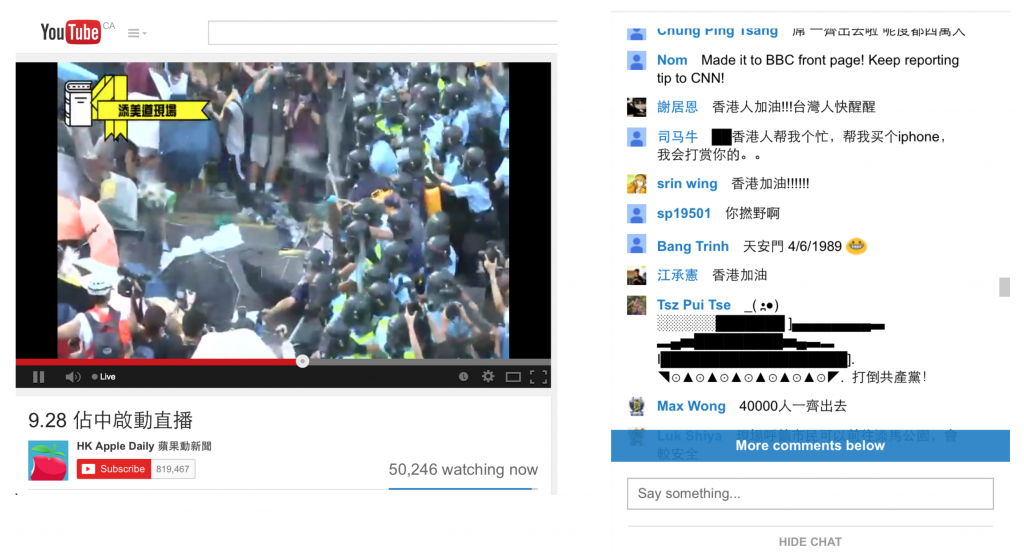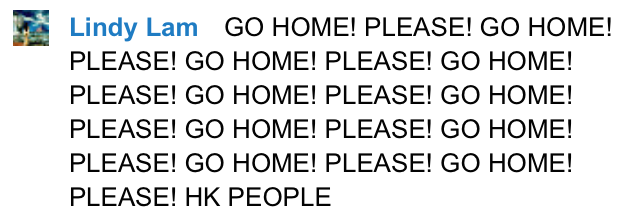a Revisit.
In CAP, we have generally discussed a lot about how the media plays a role in amplifying particular events (and the attached life narratives) to a certain level where their authenticity becomes questionable. That is, life narratives through the media could be falsified and distorted to suit certain private agendas. As Riverbend observes that:
“…the leaders don’t make history. Populations don’t make history. Historians don’t write history. News networks do. The Foxes, and CNNs, and BBCs, and Jazeeras of the world make history.”
I wonder if the above observation is keeping up with the ever-changing cyberspace we are living in; Where the audience are introduced to recent peer-to-peer media hubs (such as Instagram, YouTube,..) where people actually witness a piece of history first-handedly. For instance, this post will be a revisit of what happened in Hong Kong in the past few months with various evidence I recorded.
On September 28th, 2014, the pro-democratic Umbrella Movement reached its boiling point when several violent clashes occurred between the student protestors and the police. Even though the occupational movement was peaceful, the police was reported to use tear gas to disperse the crowd. However, as the telecommunication technology has developed over the past years, all the wrongdoings were recorded and broadcasted live on YouTube (still on air as of today):
Then the interface of YouTube on the left had transformed into a live broadcast transmitting first-hand account of what was going on at the scene. On the right side, there was a chat box flooded with comments from the audience around the world. Some comments such as Nom’s: “Made it to BBC front page! Keep reporting tip to CNN!” wished to gain public awareness of incident through traditional media outlets. Some comments like from Bang Trinh: “… 4/6/1989” drew parallel between the movement and the Tiananmen Square incident. Pessimistic audience tended to call for less radical actions, Lindy Lam pleaded: “…GO HOME! PLEASE! HK PEOPLE”
Sometimes the observers used dark humour and sarcasm to ease the tension:
I concluded that the position of media consumers nowadays have changed dramatic. People are now accessible to social networking/media sites that allow peer-to-peer reportage. Those information received, despite being still questionable, are going through fewer media filters that may ultimately distort their authenticity: from the journalists to the editors and then to the final polished articles on the newspapers. New mediums of media have given the audience the chance to be active, to participate instantly in the ongoing global conversation (the comments on YouTube), to be online journalists/witnesses themselves just by looking at live videos on their computer screens. However, my observation could be argued the other way as the uploader of the broadcast was HK Apple Daily, a local television station rather than an individual. Possibly it was pro-democratic, perhaps it was pro-Beijing. Nevertheless, I kept myself critical receiving those motion images, and hoped the best for Hong Kong, as the very least thing I could do.


